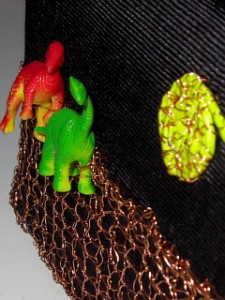 I speed-read/flicked through ‘Cut to the Chase: and 99 Other Rules to Liberate Yourself and Gain Back the Gift of Time’ by Stuart R Levine the other night. It would have seemed inappropriate to have taken more time to read it more thoroughly, plus most of the stuff wasn’t relevant to me because it was about interactions in the executive layer of big companies.
I speed-read/flicked through ‘Cut to the Chase: and 99 Other Rules to Liberate Yourself and Gain Back the Gift of Time’ by Stuart R Levine the other night. It would have seemed inappropriate to have taken more time to read it more thoroughly, plus most of the stuff wasn’t relevant to me because it was about interactions in the executive layer of big companies.
Some points were really interesting though, and I thought I’d make a note of them here for when I lose the piece of paper I wrote my thoughts on originally. Some of them are relevant to me personally, some of them to lojoco, some of them to my new official involvement with Brightbox and some to all of the above.
- Define your life goal so you don’t waste time – I initially scoffed at this because my life goal is to be happy and that involves a lot of what many people consider wasting time – being silly with my friends or playing video games for hours at a time. But John pointed out that it’s just as valid for me as anyone and it all comes down to the definition of wasting time. Video games aren’t a waste of time for me – they help me relax and as I’ve said before, they distract my conscious mind and let my subconscious work through tons of crap – but working a 60 hours week is a waste of my time. Sure, I might get lots of work finished, but I’ll be unhappy.
- Thinking aloud wastes time – specifically, this was talking about thinking aloud in meetings. John and I think aloud all the time at home – we joke we have shared mind with double processing capacity – and in brainstorming sessions, it’s absolutely invaluable. But in regular meetings, it just wastes everyone’s time. Think, make a decision and present it.
- Provide executive summaries in speech as well as writing – not necessarily sections at the start of documents called “executive summaries” but make your point early, don’t wait for the end. Make your point then sell it.
- Analyse successes as well as failures – people often focus on why things went wrong, not why they’re going right. Knowing why things are working can stop them becoming failures in the future.
- Build momentum – and build it into the plan – this is currently most obvious in terms of project management but I think it’s also relevant in marketing. Build it by achieving a run of smaller successes before focusing on a big one.
- Appeal to people’s self-interest – a marketing one.
- Close the communication loop – this is something I’m terrible at doing – receiving emails then marking them as “action needed” then not thinking about them again until it’s too late. I might have missed out on something or caused the person to worry the message hadn’t arrived. I do this all the frickin’ time. Part of this is a problem with how I treat email: I read it as it comes in as a matter of course instead of when I’m ready to deal with it. If the job will take less than five minutes, I should deal with it straight away instead of marking it “action needed” and ignoring it (and sometimes fretting about it) for a few weeks afterwards. If the job takes longer or requires some input I can’t get immediately, I should close the loop rather than leaving the other person handing – it takes just seconds to drop them an email saying “got this message, am working on it and will get back to you by x“. I’ve been trying to do this for the last few days and it’s actually relieves my stress/worry as well as the other person’s. Two thumbs up to this idea, big thumbs up.
- Measure twice, cut once – the old craftsperson saying. It wastes less resources (whether time or actual physical resources) to plan properly first rather than fixing a mess afterwards.
- Don’t be afraid of 10 minute meetings – this is something I’m going to write about more in another blog post I’ve got planned but there seems to be a collective idea of meetings being an hour in length by default, half an hour if it’s a quickee, and people feel bad if that time isn’t filled. Book it in mentally – and in the diary – for 10 minutes instead.
- Stay in touch with clients and partners – and not just about the specific nature of your precise business relationship, learn about their world: there might be new ways you can work together or, conversely, if you know they’re in a slump, you won’t bank on them so much.
- If you need a drummer, hire a drummer – not a guy who can play the drums but lives for the piano, to quote the example used in the book. In personal terms, if my heart is not into something, I shouldn’t be forcing myself to do it if there are other options.
- Don’t be afraid to hire people who will move on – good people will nearly always move on to other things because they want to keep growing and trying new things. But that’s not a reason to hire them: better getting someone who burns brightly for a year than someone who emits a dull glimmer for a decade.
- Recognise that good enough is good enough – something else I struggle with a lot with things I make or do: if something isn’t 100% perfect or a 100% success, I consider it a failure. This has been a lifelong affliction (at school, if I got an A, I was disappointed it wasn’t an A+ rather than enjoying the A) so it’s going to be hard to shift but perfectionism is debilitating.
- Know when to stop when you’re struggling – when a task isn’t going anywhere, stop. Rather than focusing on the next sentence or whatever, work how what help/advice/input could help you take it forward rather than just staring at the blank page.
- Similarly, don’t confuse activity with accomplishment – because of the perfectionism listed above, I have re-crocheted some balls of yarn a dozen times. I feel like I’m crocheting all the time but haven’t made anything. (I have, admittedly, learned a lot about tension and shaping though, so perhaps bad example.)
- Finally, if you hear the same complaint/request from two customers, act on it – obviously it’s a good idea/serious problem act on it after hearing from the first one but hearing it from two separate people is proper confirmation that something needs to be done, or at the very very least, looked at.
All in all, the book was worth getting out of the library for a quick flick through but I wouldn’t particularly recommend buying it though – there wasn’t enough it in that I felt I’d have to read it all one day.


 Back in August, I had earache. Otitis Media to be specific.
Back in August, I had earache. Otitis Media to be specific. I would like to introduce you to Zach and Jeff.
I would like to introduce you to Zach and Jeff.
